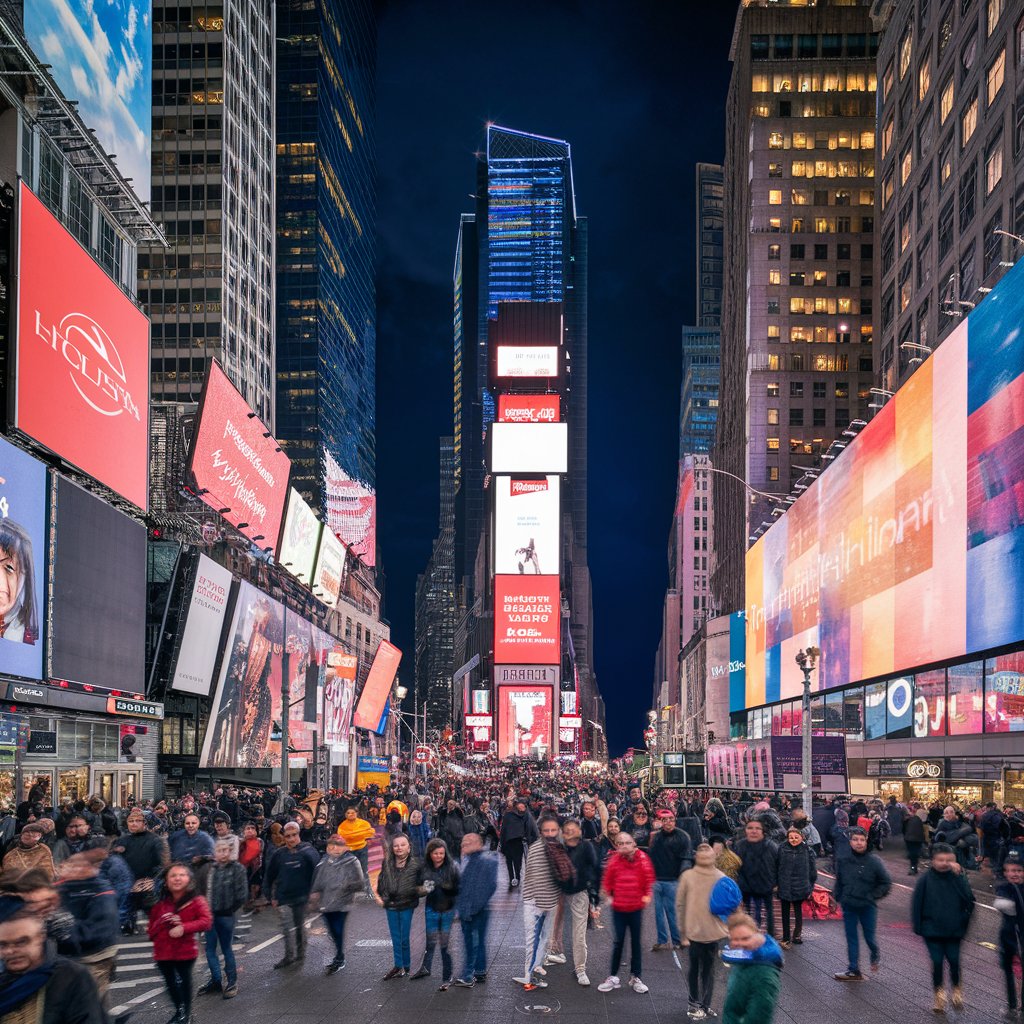Time Square in New York City is located in the heart of Manhattan at the Junction of Broadway and Seventh Avenue. It is famously known as the hub for entertainment and commercial activity in New York. It is a major tourist attraction due to its massive billboards and a vibrant atmosphere that attracts millions annually. It is known as the cross roads of the world as it epitomizes the big, stylish, chaotic, cluttered and inspiring lifestyle in New York City and modern ages.

Time Square as Symbol of New York
Time Square is symbol of New York and is synonymous with the New York itself. Its iconic neon signs, bustling streets, and Broadway theaters embody the city’s energy, diversity, and fast-paced lifestyle. It is instantly recognizable due to its distinctive billboards and screens around the world. It has been featured in lot of movies, novels, tv shows and photographs and this further solidifies its status as cultural icon.
Times Square’s proximity to diverse neighborhoods and its status as a tourist magnet make it a melting pot of cultures, languages, and perspectives. It serves as a meeting place for people from all walks of life. Times Square’s history is intertwined with the broader transformations of New York City. It is also a symbol of Urban Transformation as Times Square reflects the evolving urban landscape and cultural trends of the United States.
Economic Importance
Time Square is not only famous as cultural icon but it has huge economic importance for New York City. It generates billions of dollars annually. It attracts 131 million visitors annually and is one of the most visited places in the world. It means that on daily basis around 250,000 and 300,000 pedestrians a day. It also generates revenue via entertainment, retail, and advertising, supporting thousands of jobs and businesses.
Historical Significance of Time Square
Time Square was originally known as Longacre Square. In the 19th Century as the New York City started its expansion Northward, it also began to take its shape. It 1904, the famous New York Times moved its headquarters here and it was renamed to Times Square. Times Square’s famous billboards and electronic displays began appearing in the early 20th century, establishing it as a hub for advertising and media. The bright lights and advertising screens have become iconic symbols of Times Square and modern urban life.
Revitalization and Preservation
In the late 20th century, Times Square faced challenges of crime and urban decay. However, concerted efforts by city officials, businesses, and community leaders led to a revitalization campaign starting in the 1990s. Today, Times Square is a bustling, pedestrian-friendly area that blends history with modernity.
New Year’s Eve ball drop
Each year as midnight approaches thousands of people gather in New York’s Time Square to witness the iconic descent of Waterford Crystal ball. It is one of the most famous celebrations worldwide drawing crowd from all over the world. This tradition began in 1907 when the first ball was dropped to welcome the new year. Since then it has become as the Symbol of hope, renewal and unity.
The overall atmosphere is electric this time of the year, as people perform live music and acts of entertainment that fills the air with anticipation. As the countdown begins all eyes are on the glittering ball perched high above One Times Square. When it reaches at the bottom the celebrations starts marking the start of new chapter in everyone’s life. The New Year’s Eve ball drop in Times Square is not just a celebration of time passing, but a reflection of the human spirit’s resilience and the collective joy of welcoming new beginnings.